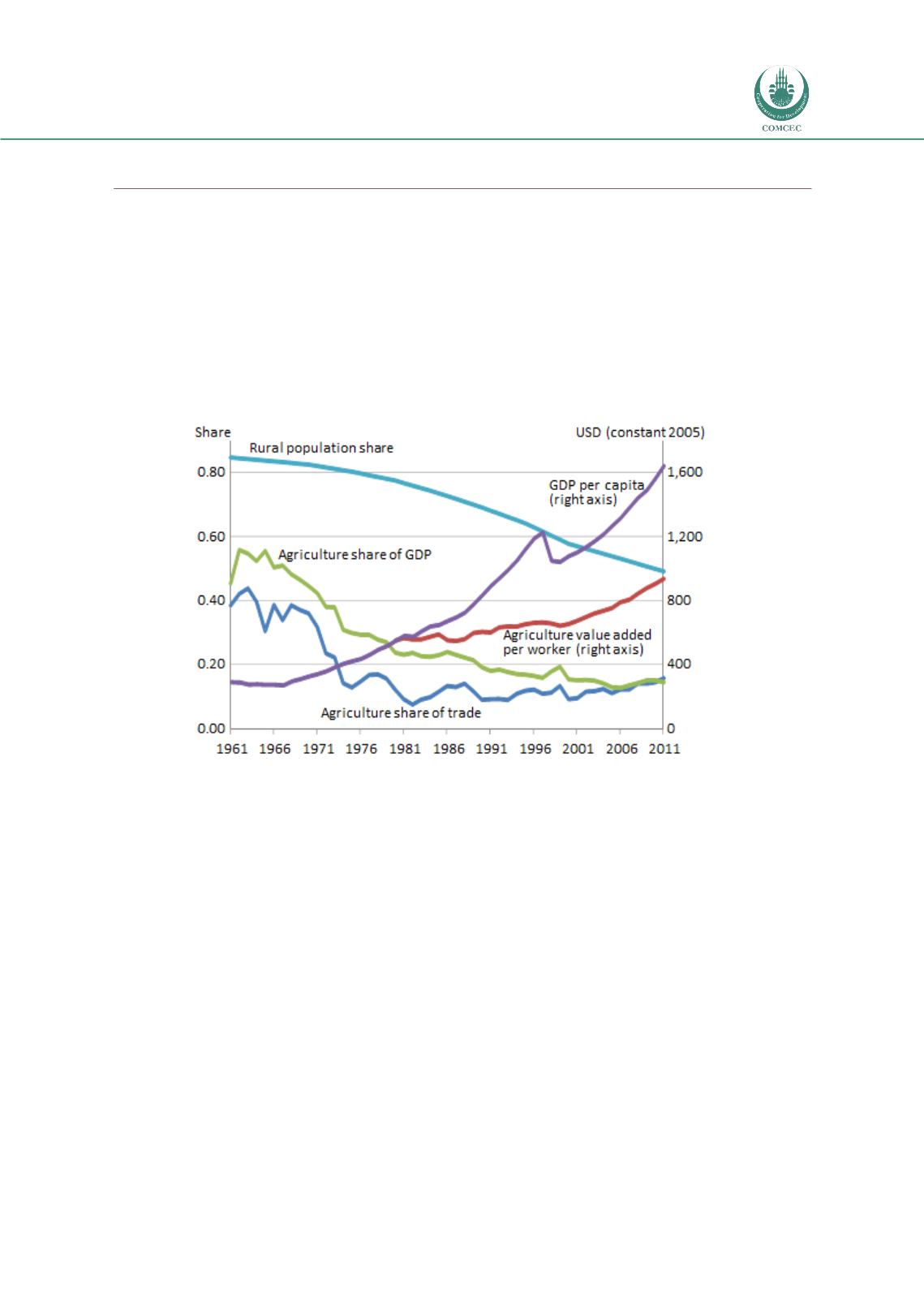

Facilitating Smallholder Farmers’ Market Access
In the OIC Member Countries
65
Indonesia
Incomes have grown rapidly in Indonesia for nearly five decades, and many of the patterns
of structural transformation described in Chapter 1 are apparent
(Figure 35). Nearly all of
the population lived in rural areas in 1961, but by 2011 the share of the population in
rural areas had fallen below 50 percent. The composition of the economy has changed
over time as well. Presently agriculture accounts for about 15 percent of GDP and about 16
percent of merchandise trade. Average incomes in Indonesia are now nearly five times
what they were in the 1960s.
Although average incomes in agriculture have grown, the gap between average incomes in
agriculture and the economy as a whole has widened. The average valued-added for a
worker in agriculture is less than 60 percent of GDP per capita.
Competitiveness and sustainability issues
For Indonesia, the challenges of connecting farmers to an increasingly urban population of
consumers are especially difficult. Indonesia is an archipelago nation of more than 18,000
islands, and more than half of the population lives on the island of Java, where the capital
(Jakarta) is located.
FIGURE 35: STRUCTURAL CHANGE AND THE INDONESIAN ECONOMY, 1961–2011
Source:
World Development Indicators (World Bank 2014h) and FAOSTAT (FAO 2014).

















